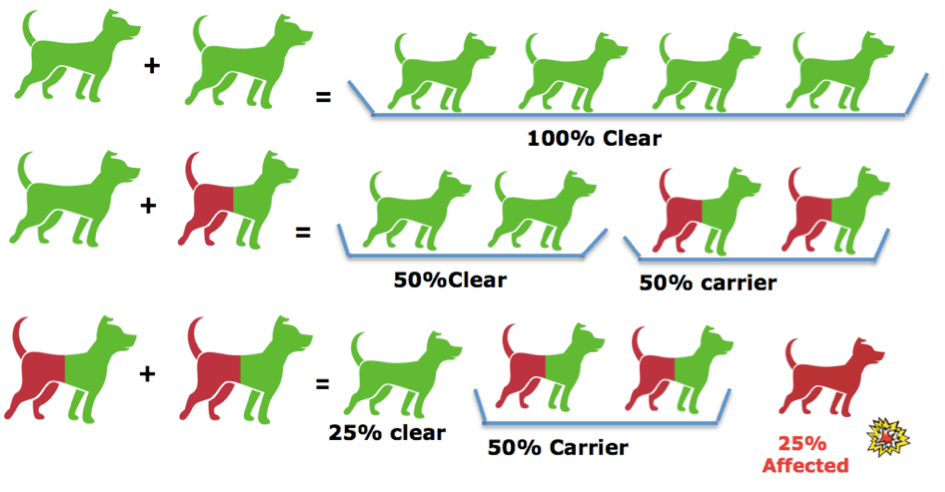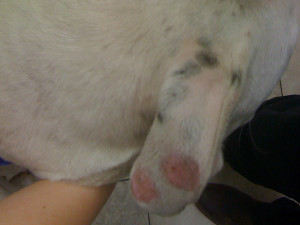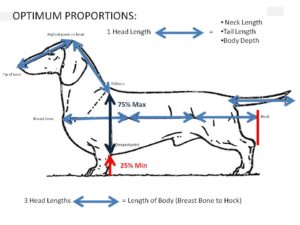
Golden Retriever
Popularity: №3
Origin: United Kingdom
full info about breed >>
Let’s figure out what does Golden Retriever Progressive retinal atrophy (also known as PRA) mean, how dangerous is it and how to treat it.
What is Progressive retinal atrophy?
Progressive Retinal Atrophy (PRA) is a common term used for a group of inherited retinal diseases. During the progression of the disease, retina of the eye degenerates over time, eventually worsening the condition and ultimately leading to blindness.This condition affects both the eyes, and is not painful for the dog.
What is retina?
The retina is a light sensitive layer of cells at the back of the eye that contains cells called photoreceptors. When light enters the eyes, it is focused by the lens onto the retina, where it is converted into electrical signals that are sent to the brain for processing and interpretation.

The two main photoreceptor cells of the retina are the rod cells and the cone cells. The dog’s eyes contain many more rods than cones. Rod cells are responsible for vision in low light conditions and for detecting and following movement. Cone cells are responsible for detecting color. Cone cells do not work very well in low light.
What the reason of Golden Retrievers Progressive retinal atrophy
More than 20 mutations have been identified that result in canine progressive retinal atrophy (PRA). The condition is characterized by bilateral degeneration of the retina resulting in progressive vision loss leading to total blindness.
Golden Retrievers are affected by more than one form of PRA with mutations in three distinct genes having been identified. Two of such mutations are known as PRA1 and PRA2.
PRA1 = Golden Retriever progressive retinal atrophy (variant 1)
PRA2 = Golden Retriever progressive retinal atrophy (variant 2)
PRA1 results from a mutation in the SLC4A3 gene and accounts for over 60% of diagnosed Golden Retrievers. PRA2 results from a mutation in the TTC8 gene and accounts for 30% of Golden Retrievers diagnosed with PRA.
Both mutations are autosomal recessive thus two copies of the same affected gene must be present for the disease to be observed and both males and females are equally affected. Presence of one copy of each affected genes in the same dog will not cause blindness[3].
Symptoms of progressive retinal atrophy
Usually, night blindness is the first sign of Progressive Retinal Atrophy (PRA). In this condition, the dog begins to lose its night vision, and has problems seeing obstacles or finding their way around in low light and darkness. As the condition progresses, the dog’s pupils become dilated.
Cataracts may also develop simultaneously with the condition, leading to a milky or clouded appearance of the lens of the eyes in some cases too.
How does PRA affect my dog?
During the progression of the disease, several signs like reluctance to jump on or off furniture during darkness, Sluggish pupillary light responses, decreased menace response, cloudy or opaque eye surface; grayish discoloration of the surface of the eye, bumping into furniture or walls, tripping or stumbling over objects, pawing at the air when going down stairs, reluctance to navigate stairs etc. may indicate the presence or progression of the condition in dog.
How fast does PRA develop?
The speed of development depends on the breed and form of disease. In most cases, the dog experiences a complete loss of vision over a period of 1-2 years.
Progressive retinal atrophy is characterized by bilateral degeneration of the retina resulting in progressive vision loss leading to total blindness. Clinical signs of PRA1 appear around 6 years of age. Clinical symptoms of PRA2 appear around 4 years of age[3].
In the later stages, cataracts can develop.
How the disease is inherited
Dogs could be of 3 possible genetic status for a recessive disease:
- clear (green dog on the picture),
- carrier( red-green dog),
- affected (red dog).
The consequences for reproduction are (statistical data)

Diagnosing PRA in Dogs
For diagnosis of PRA in dogs generally two tests are: Electroretinography (ERG) or Genetic Testing[2].
Electroretinography
An electroretinogram (ERG) scan is required, if the eyes are clouded with cataracts as well as affected by progressive retinal atrophy (PRA) because this can make physical examination of the eyes difficult.
This test is performed under General anesthetic and involves the placing of a special contact lens onto the cornea plus two tiny needles.
Genetic Testing
DNA-based blood test that helps to confirm the presence of the defective gene. This test identifies dogs with PRA as well as those who are carriers i.e. who may pass the defective gene to their offspring.
Test of one dog could cost about 50$.
How to treat?
Unfortunately, at present there is no effective treatment available that can reverse or cure progressive retinal atrophy (PRA) associated blindness. It has been recommended that antioxidant therapy can be useful in an attempt to prolong the dog’s vision for as long as possible and slow down the progression of the disease, in the absence of any definitive treatment or cure. At present, research is being undertaken into gene therapy for animals with progressive retinal atrophy (PRA)[2].




